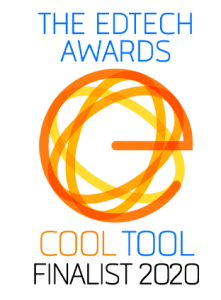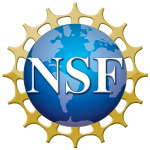What HR Solutions Are Right for Me?
The first step to identifying the most effective and appropriate HR solutions for your organization is to carefully articulate and define the HR problems you are currently facing.
Common areas HR managers face issues across all industries include (but are not limited to):
- Retention
- Recruitment
- Productivity
- Job Satisfaction
- Engagement
As the HR manager, Chief People Officer, or Director of Talent Acquisition – you know when you’re facing an issue because you’re the one living the reality each day. For instance, your retention problem is readily apparent because you and your team are constantly hiring, pouring through piles of resumes, seeing new faces around the office, and conducting too many exit interviews.
But beyond identifying the issue, have you quantified the extent of the issue? Exactly how many employees hired within the last year have left your organization? How many hours have you spent searching for, interviewing, and onboarding new employees? Simply put, how much is your retention issue truly costing you?
Understanding the exact financial impact that each issue has on your bottom line will guide you in prioritizing which problems to tackle first and identifying which solutions are most appropriate for your organization. When HR problems affect overall business functions and bear a substantial financial burden, HR solutions become business solutions. HR solutions should target root workforce issues, but also propel you towards achieving your vision and strategic business plan.
Still, human resource departments truly lie at the intersection of staff and business. You cannot deliver, produce, strategize, without the smooth coordination of your workforce.
Use Data to Better Serve Your People
Within your HR department, you may already be collecting data from multiple sources and using this data to identify core issues related to your employees and business; but are you using data to solve them?
Quality data capture patterns that are undetectable to the human observer and give us a competitive edge to do the things we’re already doing – but do it better.
In short, data-centric HR solutions will help you better serve your people by being more efficient, reducing bias, automating processes, tracking outcomes over time, and quantifying the impact of your programs.
Data-Driven HR Solutions
So, now you may be asking, “How can data solve my [insert here] problem?” Let’s review common data-driven HR solutions that can target your specific pain-points.
1. Retention
Nothing stings more than investing time, money, and resources in an employee just to watch them walk out of the company within just a few months. Not only are you left scrambling to fill an empty chair, but you don’t even have a chance to figure out what went wrong.
How can data help me? What if you knew who was likely to quit their jobs before they did it? What if you know who was likely to quit their jobs before you even hired them. This isn’t science fiction, it’s predictive hiring and it’s our specialty.
Data-driven predictive hiring systems have flexibility in that they can be designed to optimize retention by identifying key predictors of employee turnover and embedding this insight directly into hiring algorithms. Incorporating these assessments within your hiring process will help you identify candidates who are more likely to stay with your organization.

This means you can feel confident investing resources in new hires because they are more likely to stay with your organization than other candidates who scored lower on their pre-hire assessments. Further, without high rates of turnover and the constant need to interview and replace workers, you can begin to focus more on your strategic HR vision. To learn more about the science behind pre-hire assessments, check out this article.
2. Recruitment
You’re ramping up hiring for a busy season, casting a wider net, and receiving more and more applications than you ever have before (and, gasp, they’re all qualified!) You simply don’t have time to conduct hour-long interviews with your top 20 candidates, and you need to fill the position next week.
Even though they all have similar skills sets and look good on paper, how do you know who will be the best fit for the job? How do you know who will be the best fit for your company? Maybe your recruitment process is taking too long and by the time you narrowed down your top candidates, they’ve already found other work with your competitor.
How can data help me? You can use an applicant tracking system (ATS) to scrape data from resumes and professional profiles to gather insight quickly on how qualified someone may be for a given role. For large volume recruitment, this is an essential resource. Still, numerous candidates are likely to be highly qualified. Adding predictive hiring methods to your recruitment process will help you screen faster and more strategically.
Third party companies who specialize in talent analytics design selection systems by first identifying key criteria that are predictive of relevant job outcomes (role performance, success, fit, or turnover). When applicants take pre-hire assessments as part of the selection process, you can predict their standing on the criteria used to design the system. Said differently, there are companies who offer pre-hire assessments that can facilitate the rapid reduction of applicant pools by predicting an applicant’s score on a job-related measure of interest.
This provides insight you could not have gathered from a subjective candidate interview. Using a data-driven process to establish relevant cut off scores, predictive hiring systems reduce time spent in the hiring process by providing a simple yes/no continuation recommendation (like that in jobZology’s Candidate Analytics software – see image below). Your time is valuable, and with data-driven HR solutions you can treat it as such.

3. Productivity
You thought you hired the star players. They knocked their interviews out of the ball park and promised to deliver. But it turns out theses individuals were all talk, no walk. You can’t afford to have another hire whose performance doesn’t stack up to your expectations. The key performance indicators that your organization tracks clearly show that productivity has been down in the last 2 quarters, but what can you do about it?
How can data help me? There are numerous articles and strategies out there that discuss how to boost productivity of current employees. However, there are HR solutions that can help you preemptively manage productivity level. With predictive hiring solutions, you can identify individuals likely to be strong performers before they even join your team.
The first step is to identify factors that have a strong relationship with productivity among your current employees (i.e., conduct a concurrent validation study). Then, these specific factors can be incorporated into and measured during the hiring process to derive a specific pre-hire assessment score for each candidate. This score is then used to project the likely performance of that candidate (where they fall along the blue line in the illustration below), based on the established and validated statistical relationship between the two measures.

If there is a minimum level of productivity necessary for the role (red star), you can identify the corresponding pre-hire assessment score a candidate needs by following the starred productivity value horizontally to the blue prediction line. Based on this data-driven model, you can choose to only accept candidates who are likely to meet or exceed the minimum productivity requirements (green region) and reject candidate who score below (orange region).
4. Job Satisfaction & Engagement
In the interview process, Lance was grinning ear to ear when he said told you that he works well in innovative, fast-paced environments. Without predictive hiring systems, you have to take Lance’s word for it. Is he telling you the truth or is Lance telling you what you want to hear so he can get the job? Only time will tell in this instance.
Six months into the job, Lance is experiencing dissatisfaction, disengagement, and burnout. The fast-paced environment is wearing him down and he is actively searching for new work. He prefers an environment with established work flows, consistent processes, and a great degree of stability.
Rather than taking Lance’s word for it during the interview, third-party assessments like jobZology® provide measures of fit-to-job and fit-to-company, which gives you an objective and reliable measure of whether Lance’s workplace preferences are in alignment with the environment that you can offer within your organization. Research tells us that when an individual’s values correspond with those of their organizations, they are more happier and more satisfied.
For instance, using jobZology’s software, you might see that Lance (yellow circle) scores considerably lower on innovation preferences in comparison to what is typical this particular organization (purple circle), even though he was fairly convincing in the interview when he said he preferred innovative settings.

When looking at the runner-up candidate, Natalie (yellow circle), we can see that her preference for innovative environments is in much closer alignment with what is typical of this particualr organization (purple circle).

Predictive hiring solutions, like jobZology, deliver insights on job fit and their fit to your organizational environment. Essentially, when faced with a considerable number of highly skilled applicants, you can narrow down your top candidate by identifying whose interest and values are in alignment with those that the role can provide, as well as who’s workplace preferences align with the type of workplace environment your company can offer them, and the values that you prioritize as an organization. In this instance, this data-driven system would provide reliable insight on which candidate is a better fit for your environment.
What’s Next?
Did you notice a theme among these HR solutions? Was it obvious? We hope so…..hint: predictive hiring!
At jobZology, we know that implementing a well-designed predictive hiring system can have a multi-facetted impact within your organization. For a deeper discussion of predictive hiring and how you can use data-driven systems to transform your workforce, check out this blog.
Get in touch with a Solutions Advocate today to schedule a free demo of jobZology’s hiring tools.






